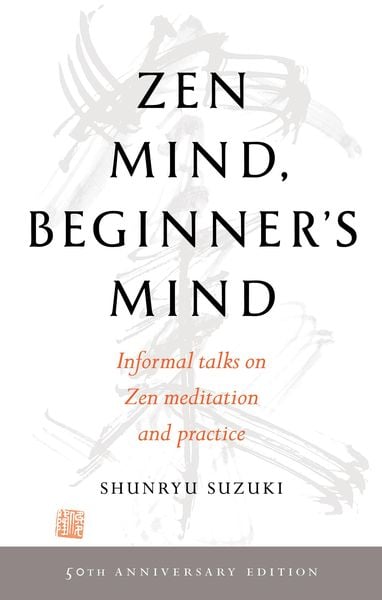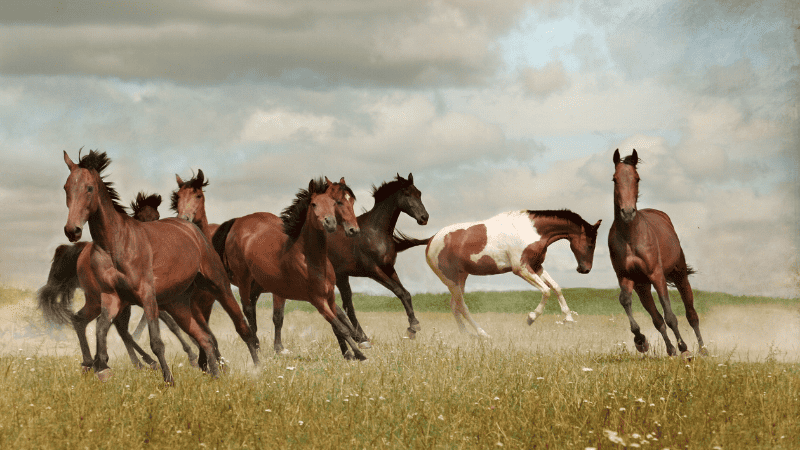The four types of horses and the strength of the weakest horse
In the world of Zen Buddhism, profound teachings are often conveyed through simple but compelling parables. One of these stories, which also appears indirectly in the book "Zen Mind, Beginner's Mind." is alluded to, contains a valuable lesson about the nature of strength and the transformative power hidden in perceived weakness. This article explores the parable of the weakest horse and shows various ways it can be interpreted to inspire personal growth.

teaches us how different people respond to the Buddha's teachings.
The story itself is found in the "Samyutta Agama Sutra", one of the oldest collections of Buddhist scriptures.
Buddha about the four types of horses
Buddha once declared:
"There are four kinds of horses. The first horse gallops only at the sight of a whip. The second horse gallops when the whip touches its hair. The third horse gallops when the whip touches its skin. The fourth horse gallops only when the whip hits its bones."
Then the Buddha compared these four kinds of horses to four kinds of people who hear his teachings. He said:
"In the same way, there are four kinds of people who listen to my teachings. The first person listens and understands immediately, like the first horse that gallops at the sight of a whip. The second person listens and understands after some thought, like the second horse that gallops when the whip touches its hair. The third person listens and understands only after some thought, like the third horse galloping when the whip touches his skin. The fourth person listens and understands only after much toil and suffering, like the fourth horse that gallops when the pain of the whip has penetrated to the bone."
Meaning of the four types of horses
The story of the four kinds of horses is a powerful illustration of how different people have different sensitivities and receptivity to Buddhist teachings. Some people grasp the reality of impermanence, suffering, and not-self quickly and are ready to walk the path of liberation. Others need more time and effort to understand and practice the teachings. And still others are so attached to their worldly pleasures and delusions that they do not wake up until they are confronted with great pain and loss.
The Buddha did not condemn or condemn any of these people. He taught with compassion and patience, knowing that each person has their own pace and potential for awakening. He also encouraged his followers to be like the first type of horse, responding quickly and joyfully to his teachings.
The story of the four types of horses is not only a lesson for us as listeners, but also as teachers. We can learn from the Buddha how to share his teachings with others in a skillful and compassionate way, without expecting everyone to respond in the same way. We can also learn how to adapt our teaching methods to the needs and abilities of different people.
Shunryu Suzuki on why the worst horse can be the best one
Shunryu Suzuki even went a step further in considering the four types of horses and especially the worst horse.
Suzuki was a Zen master who taught in the United States and founded the first Zen monastery outside of Asia. He wrote a book entitled "Zen Mind, Beginner's Mind."in which he explained some of the teachings of Zen Buddhism.
Suzuki said that most people want to be the best horse, but that is not the correct understanding of Zen. He said that Buddha has more compassion for the worst horse than for the best horse because the worst horse has more difficulty learning to walk. Suzuki said that if we practice Zen with the great mind of the Buddha, we will find that the worst horse is the most valuable because in our imperfections we will find the foundation for our way-seeking mind. He said that sometimes the best horse can be the worst horse and the worst horse can be the best.
Suzuki also states that the effect and enrichment from the Buddhist teachings can be greatest in the worst student.
Another take away
History is also a good reminder for acceptance and non-judgment. Contrary to our social conditioning of what is good and what is bad, reality can surprise us as soon as the context is changed.
Those who have difficulty practicing Zen, Suzuki said, can find more meaning in it than those who find it easy.
We usually judge ourselves and others by how good we are, how fast we learn, how much we achieve. We think that success is better than failure, and that ease is better than struggle. But Suzuki challenges us to see things differently. He invites us to recognize the value of our difficulties, our mistakes, and our imperfections. He means that they can help us grow, learn, and awaken. He shows us that what we think is bad can actually be good, and what we think is good can actually be bad. All of this can teach us to be humble, compassionate and open-minded.
The story of the four types of horses is one of many inspiring stories from Buddhism. If you want to learn more about this story and its sources, you can check out these links:







